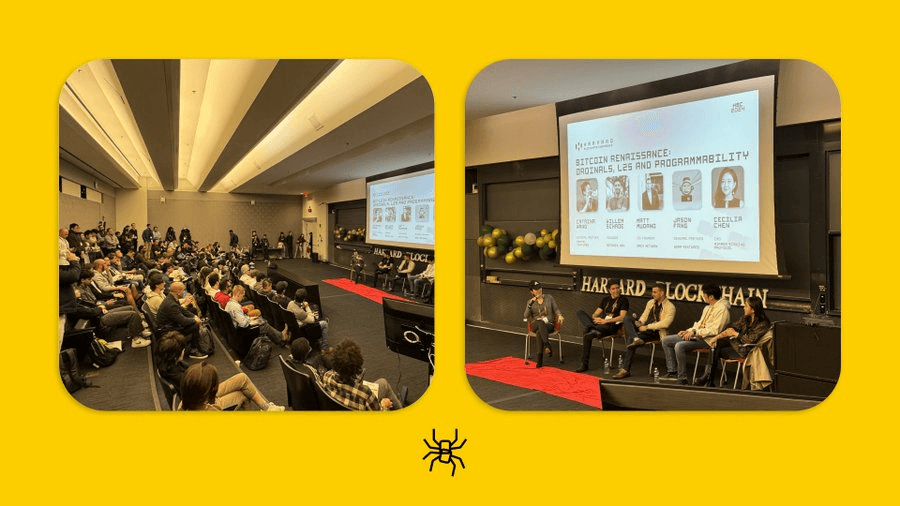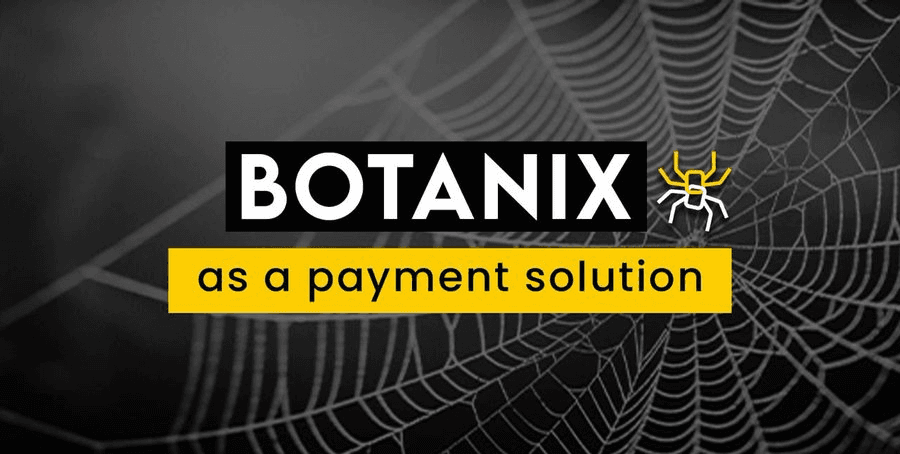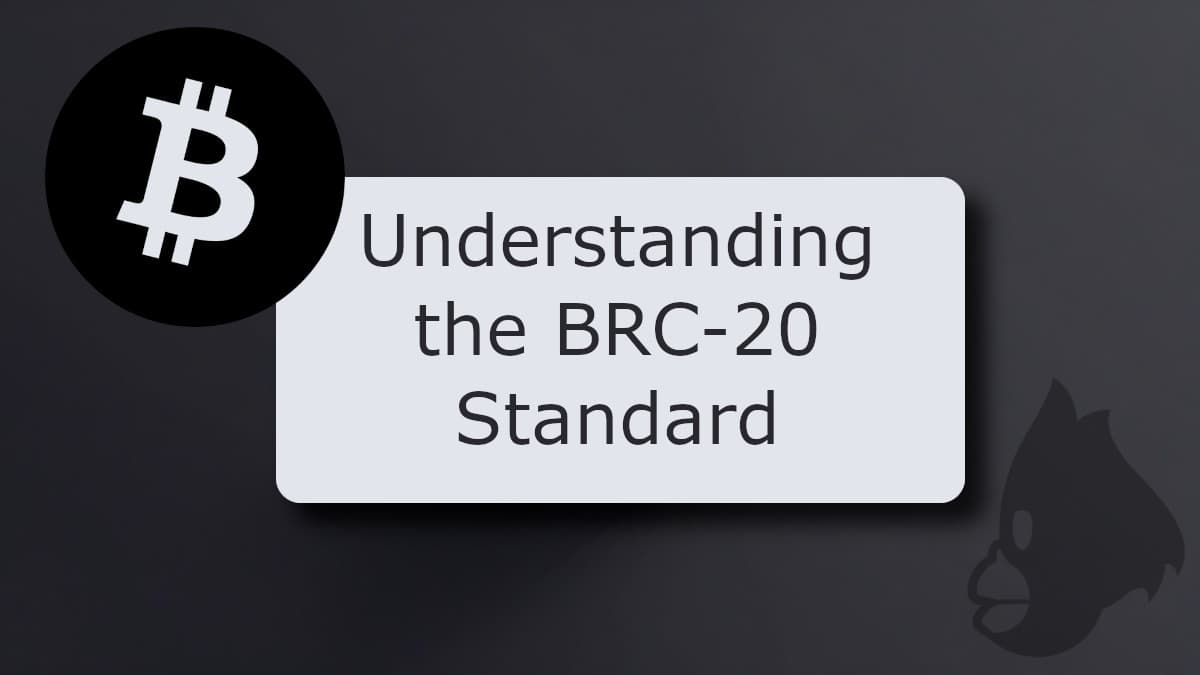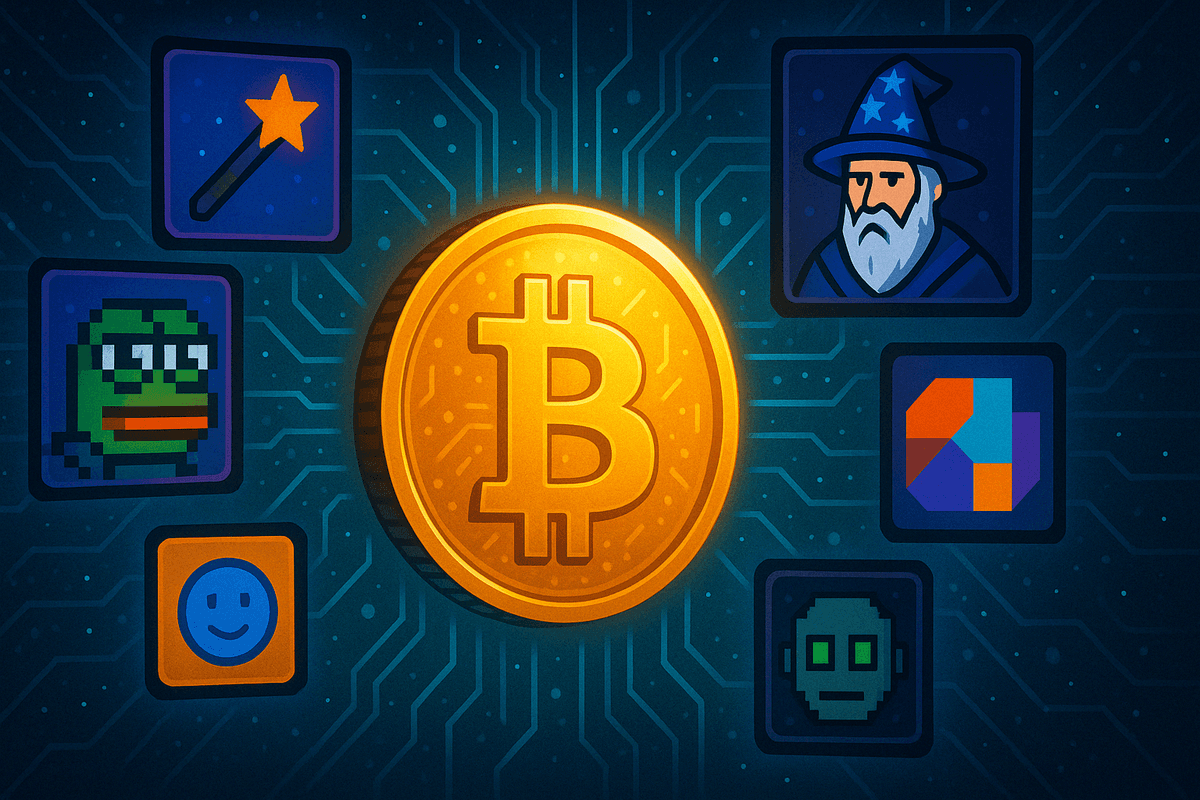Key Takeaways
- Layer 2 for Bitcoin: Botanix introduces the Spiderchain, an EVM-compatible Layer 2 on Bitcoin, combining Bitcoin's security with Ethereum's programmability.
- Smart Contracts on Bitcoin: Developers can easily port Ethereum dApps to Bitcoin, enabling new DeFi possibilities.
- Decentralized and Secure: Uses multisig wallets and validator nodes to ensure decentralized transaction validation.
- Scaling Solution: Spiderchain aims to enhance Bitcoin's scalability and composability.
- Roadmap: Mainnet launch scheduled for 2025 with full permissionless staking.
Web3’s Evolution, Bitcoin Challenges and the Spiderchain Solution
The blockchain trilemma states it is impossible to build a distributed blockchain network that is simultaneously optimized for security, decentralization, and scalability.
Throughout many years of continued growth, Bitcoin has become the most decentralized and secure blockchain network in existence. Unfortunately, it has always lacked the high transaction throughput and scalability required to become the future backbone of the internet.
In addition, Bitcoin has limited support for smart contract development, representing a major limitation of the network’s overall utility. In 2015, Ethereum became the first blockchain to implement robust smart contract functionality, allowing developers to leverage more programmability for the development of a wide range of utilities that would have failed to materialize had a new generation of smart contracts not been developed by Vitalik Buterin and his other founders.
The introduction of robust programmability on blockchains changed the industry forever, leading to the development of a vast number of smart contract-capable chains in recent years (such as Solana, Avalanche, NEAR, Aptos, Sui, and others), all of which continue to contribute to the development of the new age Web3 internet.
Smart contract programmability and the large number of existing smart contract platforms have led to the creation of a large number of application ecosystems. Many of these networks feature a vast number of properties including composability, speed, privacy, decentralization, interoperability, and the like.
That said, many industry experts (including those designing the Spiderchain) believe decentralization is the most important characteristic blockchain systems must possess because it underlies the qualities we touched on above. Over the long term, all other properties become obsolete if a centralized third-party is required to operate a blockchain network.
Bitcoin is a base layer that is optimized to be as secure and decentralized as possible, making it suitable as a network for the proliferation of a global reserve currency and self-sovereign hard currency. Like Ethereum, Bitcoin has recently turned to a host of newfound Layer 2 protocols to improve its scalability and composability while simultaneously eliminating high gas fee susceptibility.
The EVM, the Spiderchain, and Scaling Bitcoin
As one of the most well-known Layer 2 protocols on Bitcoin, the Lightning Network is working to solve many challenges related to payment channels for businesses and individuals but is limited in the number of additional use cases it can bring to the Bitcoin network.
At outset, Ethereum has experienced mind-boggling growth in decentralized finance (DeFi) applications that are generally not available on Bitcoin. The total overall value of Layer 2’s on Bitcoin is under 0.1% of Bitcoin’s market cap, while the total value of wrapped Bitcoin on Ethereum is more than 2%, representing a 20-fold discrepancy.
As is evidenced by Bitcoin's primary utility as a network tasked with the movement of the world’s greatest store of value, the platform has seen minimal growth in terms of TVL on its Layer 2’s and supported applications in recent years.

Despite that, this is quickly changing. Nonetheless, Bitcoin’s approach is quite different compared to Ethereum’s role as the internet of value’s programmable layer because of its inability to host smart contract-tailored application development.
Contrastingly, many Layer 2’s building on Bitcoin represent a different approach. One such L2 that could help solve the challenges we touched on above is the Spiderchain, an Ethereum Virtual Machine (EVM)-equivalent platform built on Bitcoin.
Bitcoin acts as the world’s most decentralized and secure bottom layer (Layer 1), while the Spiderchain second layer (L2) will support composability and Ethereum smart contract’s highly developed capabilities.
Botanix Labs introduces the Spiderchan primitive as a solution that allows for full decentralization, extreme scalability, and robust security, with the ability to develop smart contracts and applications on the Bitcoin network.
Spiderchain: A Bitcoin-Enabled EVM Compatible Layer 2
The Spiderchain represents a leading-edge EVM compatible Layer 2 platform atop the Bitcoin network.
Its proprietary design enables a robust, simple and familiar development environment that allows developers to develop their own Ethereum-compatible applications on Bitcoin.
This design allows Ethereum developers to easily port their applications to the larger Bitcoin ecosystem, dramatically eliminating the complexities associated with connecting Ethereum and Bitcoin development environments.
This is a critically important feature for the continued adoption of the Spiderchain because Ethereum is the most widely used smart contract platform in the world.
More generally, the Botanix Labs roadmap makes use of the following interconnected elements:
- Spiderchain: Spiderchain is used to ensure the verifiability of staked collateral and bitcoin fund movement atop Bitcoin. The Spiderchain protocol is a set of interconnected multi-signature wallets on Bitcoin built to continuously evolve while ensuring the cryptographically verifiable security of all platform-held funds.
- Bitcoin network: The Bitcoin blockchain provides its robust security-sharing guarantees to the Spiderchain network and allows all Spiderchain nodes to run on Bitcoin simultaneously.
- Spiderchain EVM: The Spiderchain EVM is a Solidity-enabled Ethereum-equivalent virtual machine operating on the Spiderchain as the Rust implementation (Reth) of Ethereum.
- Orchestrator nodes: Orchestrator nodes are validator nodes operating on the Spiderchain responsible for ensuring network consensus and balanced operational efficiency of the Spiderchain network. Orchestrators are tasked with validating transactions on the network and enabling the transfer of BTC liquidity between the Spiderchain and Bitcoin.
In addition to the main components introduced above, the Spiderchain is built to utilize a two-way peg (2WP) that allows for the sending and receiving of BTC transfers between both independent networks.
The Spiderchain safeguards funds moved from the Bitcoin baselayer via a web of decentralized multisigs that are custodied by randomized sets of orchestrator nodes.
The Spiderchain EVM Layer 2 platform is also built to connect directly to Bitcoin without modifying the current Bitcoin Core infrastructure (the node-based software architecture that allows Bitcoin to operate) or relying on an additional mainchain like Ethereum or Solana.
In addition, the Spiderchain provisions forward security to the Bitcoin arena by creating a framework that is designed to eliminate traditional attack vectors that obstruct conventional rollups and centralized multisig implementations as a means to shield user funds against malicious staking majority.
Furthermore, if you’d like to better understand the technical architecture of the Spiderchain platform, our newly published blog post that outlines a more detailed analysis of the protocol’s architecture is a good place to start.

Botanix Labs History and Founding
Botanix Labs initially conceptualized the idea for the Spiderchain protocol in June 2022. Botanix Labs was co-founded by CEO Willem Schroé, CTO Armin Sabouri, and COO Alisia Painter.
Because Willem Schroé was born and raised in Belgium, he chose to study at Belgium’s most prestigious university, KU Leuven, where he studied multiple engineering disciplines at bachelor’s level prior to completing his master’s degree in electronics and electrical engineering in 2015.
To add to his comprehensive engineering background, Willem has spent a significant amount of time researching authentication encryption and macroeconomics and was a national mathematics medalist in his native Belgium.
After finishing his degree, Schroé worked at ExxonMobil between 2015 and 2021 as an engineer, project manager, business planning advisor, and in various additional positions before heading to Boston to complete his MBA at Harvard Business School. It was during this period that Willem first developed the basis for what would become Spiderchain.
Prior to becoming the co-founder and CTO at Botanix Labs, Armin Sabouri worked at various tech firms as a software engineer in the Boston area. Before that, he studied computer science at both Boston University and Suffolk University.
Alisia Painter obtained her bachelor of science in physics at Western University between 2007 and 2010 and then went on to complete her bachelor of arts in business administration at the Ivey Business School at Western University between 2010 and 2012.
Painter spent several years in various roles in investment consulting, business solutions, corporate strategy, asset management, corporate development, and product marketing at Ernst & Young, Adobe, BRF, Fireblocks, and others. Shortly thereafter, Alisia moved to Boston and completed her master's of business administration at Harvard Business School where she met Willem.
In addition to its 3 founding members, Botanix Labs is made up of a core team that includes Head of Community and Growth Jayden Robinson, Chief of Staff Lucas Vanlaer, Ecosystem Lead Jay G., product manager Jeff Geudens, and software engineer Scott Millner, among others.

Spiderchain Use Cases
The Spiderchain platform allows users to create a host of protocols, dApps, and the like focused on the DeFi niche and beyond. Some of these specific utilities include those focused on non-fungible tokens (NFTs), decentralized exchanges (DEXs), restaking protocols, decentralized money markets, perpetual exchanges, and the like.
To support this new DeFi ecosystem, Botanix Labs is working with many young teams like Yala Labs and Palladium Labs, both of which are focused on the development of two distinct stablecoins (Yala’s YU and Palladium’s PUSD).
While Palladium’s PUSD is its own independent stablecoin, Yala takes its stablecoin YU further by continuing to work feverishly on the development of its lending protocol that allows users to borrow over-collateralized stablecoins by depositing BTC or inscription assets.
In addition, both stablecoins have the potential to be used in various DeFi primitives such as margin trading, yield farming, restaking, lending and borrowing, and more. Palladium is also currently developing its own two-way bridge to help bring liquidity into the Palladium and Botanix ecosystems.
Furthermore, Yala specifically allows users to access various service types on Bitcoin Finance (BitcoinFi) platforms outside of Spiderchain, creating the potential for interoperability among various Bitcoin-focused protocols.
In fact, Yala recently announced it had finalized a partnership with industry-leading Layer 2 scaling platform Stacks to dramatically boost liquidity within the Bitcoin DeFi ecosystem. The development of both projects is especially significant to help kickstart the adoption of the overall Spiderchain ecosystem and their importance should not be understated.
In addition to the above utilities, one of the additional potential uses for the Spiderchain is as a payment solution. Because of the platform’s security and high scalability, Spiderchain could be a perfect fit as a blockchain backing various types of payment rail systems.
To learn more about the Botanix ecosystem and to dive into a comparative analysis between the Spiderchain and other Layer 2 networks, have a look at the third blog post in our larger Spiderchain series.

Exploring the Spiderchain Roadmap
The Spiderchain protocol has undergone an extensive development roadmap to achieve its current state. Let’s have a look at some if its recent milestones and planned future development initiatives that make up its overall larger roadmap:
- Q4 2023 - EVM sidechain testnet this initial testnet stage allowed for the operation of full Spiderchain nodes as an independent EVM equivalent sidechain, allowing Ethereum smart contracts to work natively on the Spiderchain through Bitcoin. This system allowed users to bridge their testnet bitcoin tokens (generated via a token faucet) to and from the Bitcoin Signet testnet.
- 2024- Federated EVM sidechain expanding on the initial EVM sidechain testnet launch, came the introduction of the permissioned federated security model. This version allowed for the establishment of a single multi-signature set with known trusted federated members, while employing a round robin Proof of Authority (PoA) consensus in a similar manner to Polygon on Ethereum and Liquid on Bitcoin.
- Q1/Q2 2025 - Mainnet launch - after the final testnet is battle-tested as required, the Spiderchain mainnet will launch. The first version of the Spiderchain mainnet will include permissioned staking functionality for newly selected partners (validators). Upon initial protocol bootstrapping, the Botanix Labs team will serve as a safeguard to guarantee protocol integrity until the network’s staking pools are adequately decentralized.
- 2025 - Permissioned federation with staking - adding to the Federated EVM sidechain mainnet, staking is enabled, requiring federation members (validators) to stake BTC after joining the federation. In this version, security is enhanced with the introduction of Bitcoin’s verifiable random function (VRF) technology, while federation members are not slashed (penalized) if they act maliciously. Instead, in the event of validator manipulation, network block propagation is halted and a new block producer is selected.
- 2025 - Slashing on mainnet - slashing functionality will be introduced to the mainnet, meaning that federation members (validators/Orchestrator nodes) will be slashed in the event they act maliciously or are unresponsive during consensus.
- 2025 - Spiderchain DynaFed on mainnet Spiderchain introduces an interconnected network of decentralized multi-signature wallets which will be hosted by a specialized subset of federation members. Because Spiderchain is connected to Bitcoin, this milestone will also introduce sophisticated UTXO and wallet management.
- 2025 - Permissionless staking on mainnet - once a sufficient amount of BTC is staked within the network and the blockchain becomes sufficiently decentralized, permissionless staking will be enabled, therefore allowing anyone to secure the network by staking BTC should they choose to.
- 2025 - Fully decentralized Layer 2 mainnet - the final development stage in the current roadmap initiative will make the Spiderchain one of very few permissionless and decentralized Bitcoin L2’s along with the Lightning Network. Once this stage is realized, anyone will be able to run a full node and verify transactions on the network.
Resources
The information provided by DAIC, including but not limited to research, analysis, data, or other content, is offered solely for informational purposes and does not constitute investment advice, financial advice, trading advice, or any other type of advice. DAIC does not recommend the purchase, sale, or holding of any cryptocurrency or other investment.


